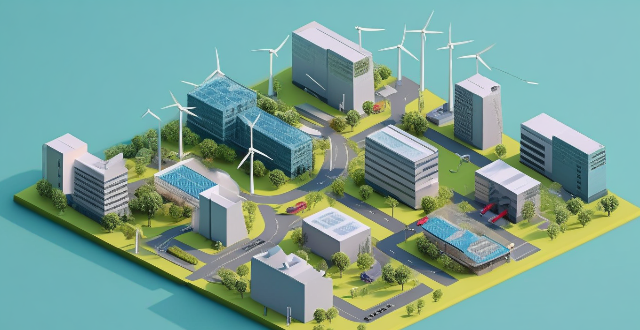Innovative technologies being developed to combat climate change include carbon capture and storage, renewable energy sources such as solar, wind, hydroelectric, and geothermal power, electric vehicles with advanced battery technology, smart grids, artificial photosynthesis, biofuels, nuclear power, geoengineering, green building design, afforestation and reforestation, sustainable agriculture, waste management and recycling, blue-green infrastructure, circular economy practices, digital innovations in energy management, eco-friendly transportation options, solar fuels, and strategies to mitigate urban heat island effects. These approaches aim to reduce greenhouse gas emissions, enhance energy efficiency, and promote the use of sustainable resources to address global warming and its impacts on the environment.

Innovative Technologies to Combat Climate Change
Carbon Capture and Storage (CCS)
- Carbon capture involves trapping CO2 emissions at their source, usually in power plants or industrial facilities.
- The captured CO2 is then compressed and transported to a storage site where it is deposited deep underground.
Renewable Energy Sources
- Solar panels: Harnessing the sun's energy to produce electricity.
- Wind turbines: Converting wind energy into electricity.
- Hydroelectric power: Generating electricity from the force or fall of water.
- Geothermal energy: Using the Earth's internal heat to generate electricity.
Electric Vehicles (EVs)
- Electric vehicles reduce greenhouse gas emissions compared to traditional gasoline-powered cars.
- Developments in battery technology are making EVs more efficient and affordable.
Battery Technology
- Lithium-ion batteries: Most common in EVs today.
- Solid-state batteries: Potentially safer and more energy-dense than lithium-ion.
- Flow batteries: Can store large amounts of energy for long periods.
Smart Grids
- Use digital communication technology to detect and react to changes in electricity use.
- Help manage renewable energy sources more effectively by balancing supply and demand.
Artificial Photosynthesis
- Mimics the process plants use to convert sunlight into energy.
- Could potentially produce fuel without competing with food crops for land.
Biofuels
- Fuels made from plant materials or animal waste.
- Examples include ethanol from corn or biodiesel from soybean oil.
Nuclear Power
- Produces energy through nuclear reactions without releasing carbon dioxide.
- Advancements in reactor design aim to make nuclear power safer and more efficient.
Geoengineering
- Large-scale interventions in the Earth's climate system to reduce global warming.
- Methods include solar radiation management (e.g., releasing reflective particles into the atmosphere) and carbon dioxide removal (e.g., ocean fertilization).
Green Building Design
- Architecture that reduces environmental impact through energy efficiency, water conservation, and use of sustainable materials.
- Passive solar design, green roofs, and smart HVAC systems are examples.
Afforestation and Reforestation
- Tree planting on a large scale can absorb significant amounts of CO2 from the atmosphere.
- Restoring degraded forests also helps maintain biodiversity and ecosystem services.
Sustainable Agriculture
- Practices that minimize environmental impact, such as reduced tillage, cover cropping, and integrated pest management.
- Precision agriculture uses technology like GPS and sensors to optimize resource use.
Waste Management and Recycling
- Reduces the amount of waste sent to landfills where it produces methane, a potent greenhouse gas.
- Recycling conserves resources and reduces the need for new raw materials.
Blue Green Infrastructure
- Combining natural features like wetlands and green spaces with built infrastructure to manage stormwater and improve urban environments.
- Helps mitigate urban heat island effect and provides habitat for wildlife.
Circular Economy
- An economic model aimed at eliminating waste by keeping resources in use for as long as possible.
- Encourages reuse, sharing, repair, refurbishment, and recycling of products.
Digital Innovations
- Big data analytics help predict and manage energy demand and supply more efficiently.
- Internet of Things (IoT) devices can monitor and control energy consumption in homes and businesses.
Eco-friendly Transportation
- High-speed rail and electric buses reduce dependence on fossil fuels for transportation.
- Drones and autonomous vehicles could potentially reduce congestion and improve efficiency.
Solar Fuels
- Research into using sunlight to produce hydrogen as an energy carrier.
- Hydrogen can be used in fuel cells for clean electricity generation.
Urban Heat Island Mitigation
- Strategies to reduce the temperature of urban areas, including reflective roofing materials and green roofs/walls.
- Cool pavements made from lighter-colored materials can also lower temperatures.